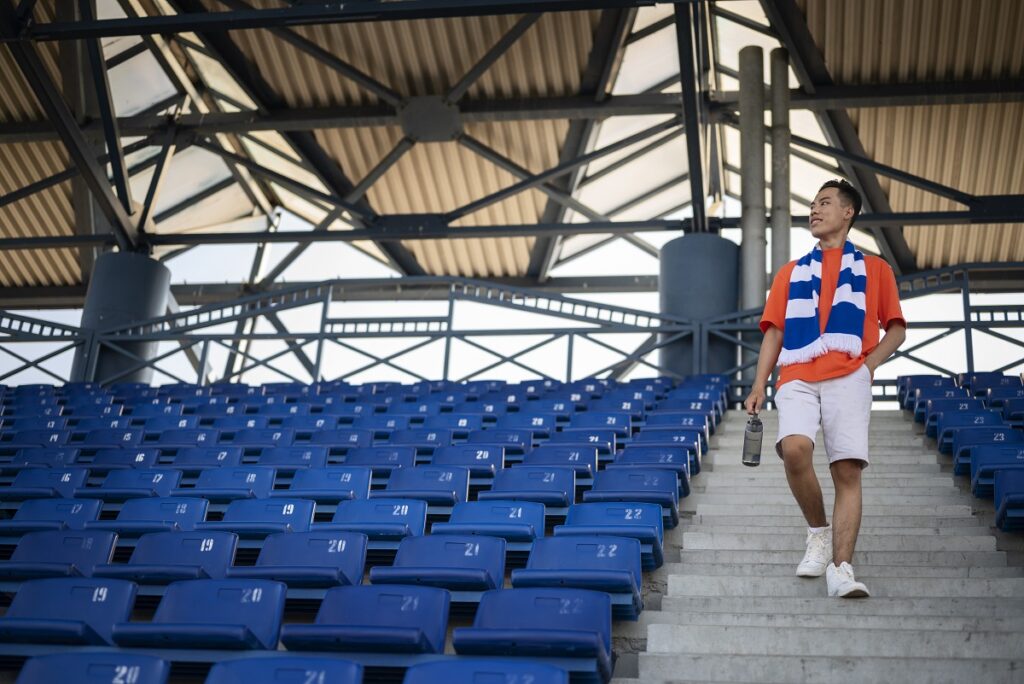Introduction
Overview of the NFL and the Significance of Stadiums
The National Football League (NFL) is not just a sports league but a cultural phenomenon, drawing millions of fans to its thrilling games. Central to the NFL experience are the stadiums where the games are played. These stadiums are more than mere venues; they are architectural marvels that offer an immersive experience, blending sports, entertainment, and luxury.
Introduction to the Concept of Luxury and Expense in Stadiums
In recent years, NFL stadiums have evolved from simple sporting venues to lavish complexes that boast state-of-the-art facilities, premium amenities, and cutting-edge technology. The trend towards luxury is driven by the need to provide an exceptional experience for fans and to generate additional revenue through premium seating, corporate sponsorships, and hosting various events.
Purpose of Exploring the Top Three Most Expensive NFL Stadiums
This article delves into the top three most expensive stadiums in the NFL: SoFi Stadium, Allegiant Stadium, and MetLife Stadium. Each of these stadiums represents a pinnacle of design, construction, and financial investment. By exploring their features, costs, and impacts, we aim to understand how these modern coliseums are shaping the future of football and urban development.
Stadium 1: SoFi Stadium
General Information
Location and Home Teams
SoFi Stadium is located in Inglewood, California, and serves as the home for both the Los Angeles Rams and the Los Angeles Chargers. The stadium is part of a larger sports and entertainment complex that includes retail, office spaces, and residential units, making it a hub for community activity.
Opening Date and Construction Timeline
The stadium officially opened its doors on September 8, 2020, after nearly four years of construction. The groundbreaking ceremony took place in November 2016, and despite delays caused by weather and other factors, the project was completed within the projected timeframe.
Cost and Funding
Total Cost and Funding Sources
The total construction cost of SoFi Stadium is estimated at a staggering $5.5 billion, making it the most expensive stadium ever built. The funding for this massive project came from a combination of private investments and loans, primarily led by Rams owner Stan Kroenke.
Financial Impact on the Community
The financial impact of SoFi Stadium on the Inglewood community has been significant. The construction phase alone created thousands of jobs, and the ongoing operations of the stadium continue to support local employment and business growth. Moreover, the presence of the stadium has spurred additional real estate development in the surrounding area.
Design and Architecture
Architectural Firms and Designers
The architectural design of SoFi Stadium was spearheaded by HKS, Inc., a global architecture firm known for its innovative sports facilities. The design emphasizes fluidity and movement, inspired by the coastal geography of Southern California.
Unique Design Features
SoFi Stadium features a distinct double-canopy roof that covers both the stadium and the adjacent pedestrian plaza. This translucent roof, made from ETFE (ethylene tetrafluoroethylene) film, allows natural light to filter through while protecting spectators from the elements. The stadium also boasts an infinity video board, the largest of its kind, providing an unparalleled viewing experience.
Facilities and Amenities
Seating Capacity and Types
With a seating capacity of approximately 70,240, expandable to over 100,000 for special events, SoFi Stadium offers a variety of seating options. These include general admission seats, club seats, and luxury suites, each designed to provide comfort and excellent sightlines.
Premium Suites and VIP Areas
SoFi Stadium features numerous premium suites and VIP areas, including the ultra-exclusive Owners’ Suites and Bungalow Suites, which offer private entrances, dedicated concierges, and gourmet catering.
Technological Advancements
The stadium is equipped with state-of-the-art technology, including 5G connectivity, a 4K HDR video system, and an integrated digital signage network. These advancements enhance the fan experience by providing high-speed internet access, crystal-clear visuals, and interactive content.
Events and Usage
NFL Games and Other Sports Events
As the home of the Rams and Chargers, SoFi Stadium hosts numerous NFL games each season. Additionally, the stadium is designed to accommodate a variety of other sports events, including college football, soccer, and even the Super Bowl, which it hosted in 2022.
Concerts and Entertainment Events
Beyond sports, SoFi Stadium is a premier venue for concerts and entertainment events. Its flexible seating configurations and advanced acoustics make it ideal for hosting major music acts, festivals, and other large-scale events.
Economic Impact
Job Creation and Local Economy Boost
The construction and operation of SoFi Stadium have significantly boosted the local economy. The project created thousands of construction jobs and continues to support numerous permanent positions in stadium operations, hospitality, and retail.
Revenue Generation and Financial Sustainability
SoFi Stadium generates substantial revenue through ticket sales, concessions, merchandise, and naming rights deals. The stadium’s financial sustainability is further bolstered by its ability to attract high-profile events, ensuring a steady stream of income.
Stadium 2: Allegiant Stadium
General Information
Location and Home Teams
Allegiant Stadium is located in Paradise, Nevada, just off the Las Vegas Strip. It serves as the home field for the Las Vegas Raiders and the University of Nevada, Las Vegas (UNLV) Rebels football team.
Opening Date and Construction Timeline
The stadium officially opened on July 31, 2020. The construction process began in November 2017, and despite challenges such as the COVID-19 pandemic, the project was completed on schedule.
Cost and Funding
Total Cost and Funding Sources
The funding came from a mix of public and private sources, including a significant contribution from hotel room taxes in Clark County and investment from Raiders owner Mark Davis.
Financial Impact on the Community
The stadium has had a notable financial impact on the Las Vegas community, driving tourism and economic activity. The influx of visitors for games and events boosts local businesses, including hotels, restaurants, and entertainment venues.
Design and Architecture
Architectural Firms and Designers
The design of Allegiant Stadium was handled by the architecture firm MANICA Architecture, known for its work on sports facilities worldwide. The design reflects the sleek and modern aesthetic associated with Las Vegas.
Unique Design Features
One of the standout features of Allegiant Stadium is its black glass exterior, which gives it a distinctive, futuristic look. The stadium also has a retractable natural turf field and large retractable windows that offer stunning views of the Las Vegas Strip.
Facilities and Amenities
Seating Capacity and Types
Allegiant Stadium has a seating capacity of 65,000, expandable to 72,000 for special events. The stadium offers various seating options, including club seats and suites that provide an enhanced viewing experience.
Premium Suites and VIP Areas
The stadium includes several premium areas, such as the Wynn Field Club, which offers a nightclub experience with DJs, premium bottle service, and VIP seating. Additionally, the Owner’s Club provides an exclusive, high-end environment for VIP guests.
Technological Advancements
Allegiant Stadium features advanced technology, including a robust Wi-Fi network, high-definition video boards, and a sophisticated sound system. These technological features ensure a top-notch experience for fans attending events.
Events and Usage
Concerts and Entertainment Events
Allegiant Stadium is a prime location for concerts and large-scale entertainment events. Its proximity to the Las Vegas Strip makes it an attractive venue for major artists and performers.
Economic Impact
Job Creation and Local Economy Boost
The construction of Allegiant Stadium provided thousands of jobs, and its ongoing operations continue to support the local economy through employment in various sectors, including hospitality and retail.
Revenue Generation and Financial Sustainability
The stadium generates revenue through ticket sales, concessions, and naming rights agreements. Its strategic location and ability to host a wide range of events contribute to its financial viability.
Stadium 3: MetLife Stadium
General Information
Location and Home Teams
MetLife Stadium is situated in East Rutherford, New Jersey, and serves as the home for both the New York Giants and the New York Jets. It is part of the Meadowlands Sports Complex, which includes other sports and entertainment facilities.
Opening Date and Construction Timeline
MetLife Stadium officially opened on April 10, 2010, following a construction period that began in September 2007. The project was completed on time and within budget, a notable achievement for such a large-scale endeavor.
Cost and Funding
Total Cost and Funding Sources
The total cost of constructing MetLife Stadium was approximately $1.6 billion. The funding for the project was sourced from private investments by the Giants and Jets, with no direct public funding involved.
Financial Impact on the Community
MetLife Stadium has had a significant economic impact on the surrounding community. The construction phase generated numerous jobs, and the stadium’s operations continue to support local businesses and create employment opportunities.
Design and Architecture
Architectural Firms and Designers
The design of MetLife Stadium was a collaborative effort between the architectural firms 360 Architecture, EwingCole, and Rockwell Group. The stadium’s design focuses on flexibility and fan experience.
Unique Design Features
MetLife Stadium features a neutral color scheme that can be customized for each home team, allowing it to effectively serve as the home field for both the Giants and the Jets. The stadium also includes a large LED facade and flexible seating arrangements.
Facilities and Amenities
Seating Capacity and Types
With a seating capacity of 82,500, MetLife Stadium is one of the largest in the NFL. It offers various seating options, including club seats, suites, and general admission areas, ensuring a diverse range of experiences for fans.
Premium Suites and VIP Areas
MetLife Stadium features numerous premium suites and VIP areas, including the Commissioners Club and Coaches Club, which offer luxury amenities such as private entrances, upscale dining, and exclusive views of the field.
Technological Advancements
The stadium is equipped with advanced technology, including high-definition video boards, a robust Wi-Fi network, and interactive digital displays. These features enhance the fan experience and provide additional entertainment options.
Events and Usage
NFL Games and Other Sports Events
As the home of the Giants and Jets, MetLife Stadium hosts numerous NFL games each season. Additionally, the stadium is designed to accommodate a variety of other sports events, including international soccer matches and college football games.
Concerts and Entertainment Events
MetLife Stadium is a premier venue for concerts and large-scale entertainment events. Its capacity and state-of-the-art facilities make it an ideal location for major music acts and festivals.
Economic Impact
Job Creation and Local Economy Boost
The construction and ongoing operations of MetLife Stadium have significantly boosted the local economy. The project created numerous construction jobs, and the stadium continues to support employment in various sectors, including hospitality and retail.
Revenue Generation and Financial Sustainability
MetLife Stadium generates substantial revenue through ticket sales, concessions, merchandise, and naming rights agreements. Its ability to host a wide range of events ensures a steady stream of income, contributing to its financial sustainability.
Comparative Analysis
Cost Comparison
Detailed Comparison of Total Costs
SoFi Stadium stands out as the most expensive stadium, with a total cost of $5.5 billion. Allegiant Stadium follows with a cost of $1.9 billion, while MetLife Stadium was constructed for $1.6 billion. The differences in cost can be attributed to various factors, including location, design complexity, and technological advancements.
Reasons Behind Cost Differences
The higher cost of SoFi Stadium is largely due to its extensive amenities, advanced technology, and the overall scale of the surrounding entertainment complex.
Design and Architecture Comparison
Unique Design Elements of Each Stadium
SoFi Stadium’s double-canopy roof and infinity video board set it apart as an architectural marvel. Allegiant Stadium’s black glass exterior and retractable field highlight its modern aesthetic, while MetLife Stadium’s flexible design caters to both the Giants and Jets, offering a unique dual-team approach.
Architectural Innovations and Their Impact
The architectural innovations in each stadium enhance the fan experience and set new standards for stadium design. SoFi Stadium’s roof and video board provide a visually stunning environment, Allegiant Stadium’s retractable elements offer versatility, and MetLife Stadium’s customization capabilities ensure an adaptable fan experience.
Facilities and Amenities Comparison
Differences in Seating, Suites, and Technology
SoFi Stadium offers a wide range of seating options, including luxury suites and high-tech amenities. Allegiant Stadium’s premium areas, such as the Wynn Field Club, provide unique entertainment experiences, while MetLife Stadium’s extensive suite options and advanced technology ensure a comprehensive fan experience.
Events and Usage Comparison
Types and Frequency of Events Hosted
All three stadiums host a variety of events, including NFL games, concerts, and other sports events. SoFi Stadium and Allegiant Stadium have leveraged their modern designs to attract high-profile events, while MetLife Stadium’s large capacity makes it a popular choice for major concerts and sports tournaments.
Impact on Fan Experience and Revenue
The diverse events hosted by these stadiums enhance the fan experience and contribute to revenue generation. SoFi Stadium’s technological advancements, Allegiant Stadium’s entertainment options, and MetLife Stadium’s capacity and flexibility ensure that fans have access to a wide range of activities, boosting overall satisfaction and financial performance.
Conclusion
Summary of Key Points
SoFi Stadium, Allegiant Stadium, and MetLife Stadium are the three most expensive stadiums in the NFL, each representing a pinnacle of modern design, technology, and luxury. These stadiums not only provide exceptional experiences for fans but also have significant economic impacts on their respective communities.
Importance of Luxury Stadiums in the NFL
Luxury stadiums are becoming increasingly important in the NFL, as they enhance the fan experience, generate additional revenue, and set new standards for sports venues. The investment in these high-end facilities reflects the evolving nature of the league and its commitment to providing top-tier entertainment.
Future Trends in Stadium Construction and Design
Looking ahead, future trends in stadium construction and design are likely to focus on sustainability, technological integration, and multi-use capabilities. Innovations such as smart infrastructure, eco-friendly materials, and versatile design elements will continue to shape the future of stadiums.
Final Thoughts on the Impact of Expensive Stadiums on Football and Communities
The construction of expensive stadiums like SoFi Stadium, Allegiant Stadium, and MetLife Stadium underscores the significant role that these venues play in the world of football and beyond. They not only elevate the game-day experience but also contribute to the economic vitality of their communities. As the NFL continues to grow, the development of state-of-the-art stadiums will remain a key factor in its success.
For More interesting content Visit Almukhbir daily.






